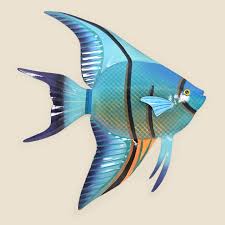Exploring Dragon Art Forms on Blue-Glazed Ceramics

Blue-glazed ceramics, especially those adorned with intricate dragon designs, hold a distinguished place in the rich history of Chinese art. These ceramics, often referred to as blue-and-white porcelain, represent a combination of aesthetic elegance, cultural symbolism, and craftsmanship that has captivated collectors and art enthusiasts worldwide. The dragon, an iconic symbol in Chinese mythology and culture, plays a crucial role in the artistry of these ceramics, adding layers of meaning and significance.
In this article, we will explore the fascinating world of dragon art forms on blue-glazed ceramics. We will delve into the history of this artistic tradition, the different types of dragon motifs found on these ceramics, their cultural meanings, the techniques used by artisans, and the influence of dragon-adorned ceramics on global art and culture.
1. The Origin and Development of Blue-and-White Porcelain
Blue-and-white porcelain, or blue-glazed ceramics, originated in China during the Tang Dynasty (618–907 AD) but reached its peak during the Yuan Dynasty (1271–1368 AD) and Ming Dynasty (1368–1644 AD). The technique involves applying cobalt blue pigment under a transparent glaze, creating vivid designs that contrast beautifully with the white porcelain surface. Over time, the technique was refined, and artisans began experimenting with a wide range of motifs, including floral patterns, landscapes, and animals. Among these motifs, the dragon became one of the most iconic and revered subjects.
The dragon has long been a symbol of power, prosperity, and good fortune in Chinese culture. Its appearance on blue-glazed ceramics was not merely for decorative purposes but also carried deep symbolic meaning. Dragons were often associated with emperors, with the belief that they possessed supernatural abilities to protect and bring blessings. As a result, dragon-adorned ceramics became symbols of imperial power and were highly prized in China and beyond.
2. The Dragon Motif: Symbolism and Cultural Significance
In Chinese culture, the dragon is not merely a mythical creature; it embodies a complex set of values and beliefs. The Chinese dragon, or Lóng (龙), is often depicted as a benevolent, noble creature with a serpentine body and various animal characteristics, such as a camel’s head, a fish’s scales, and a tiger’s claws. Unlike Western dragons, which are often seen as menacing and destructive, the Chinese dragon is a symbol of good fortune, protection, and strength.
The dragon’s association with the emperor is particularly significant. Emperors were often referred to as the “Son of Heaven,” and their imperial power was believed to be derived from the dragon’s divine authority. Therefore, dragon imagery on ceramics was a reflection of the emperor’s power, prestige, and connection to the divine. Dragon-adorned ceramics were not only used in imperial palaces but were also given as gifts to dignitaries and foreign emissaries as symbols of China’s cultural and political power.
In addition to its association with the emperor, the dragon is also seen as a symbol of longevity, fertility, and good harvests. Its mythical powers were believed to control the weather, particularly rain, which was essential for successful agriculture. As a result, dragons were often invoked during agricultural rituals and were depicted on ceramics used in ceremonies meant to ensure a good harvest.
3. Types of Dragon Designs on Blue-Glazed Ceramics
The depiction of dragons on blue-glazed ceramics is not uniform, and over the centuries, different types of dragon designs have emerged. These designs reflect various stylistic preferences, regional influences, and symbolic meanings. Let’s explore some of the most notable types of dragon motifs commonly found on these ceramics:
a. The Imperial Dragon
The imperial dragon, often referred to as the “Long”, is the most prestigious and revered dragon design on blue-glazed ceramics. It is typically shown with five claws on each foot, a symbol of the emperor’s supreme authority. This design was primarily used for imperial pottery and ceremonial items, such as vases, plates, and bowls. The imperial dragon is often shown coiled or leaping in the air, representing strength and vitality.
The five-clawed dragon is a symbol of the emperor’s divine right to rule, and these ceramics were typically produced for royal use or given as prestigious gifts. During the Ming Dynasty, these dragon-adorned ceramics became an essential part of the emperor’s regalia and ceremonial attire.
b. The Coiled Dragon
Another popular dragon design seen on blue-glazed ceramics is the coiled dragon, which symbolizes both the power and grace of the creature. This type of dragon is typically depicted with a sinuous body that spirals in a circular motion, often surrounding a central motif, such as a pearl or cloud. The coiled dragon is a symbol of balance, eternity, and the cyclical nature of life, reflecting the Daoist philosophy of harmony with nature.
The coiled dragon is often featured in decorative items such as plates, bowls, and vases. Its spiral form was believed to represent the dragon’s journey through the heavens, signifying the eternal passage of time and the continuous cycle of life.
c. The Dragon and Phoenix
The dragon and phoenix motif is one of the most iconic combinations in Chinese art, symbolizing the union of the emperor and empress. The dragon represents the emperor, while the phoenix symbolizes the empress. Together, they represent balance, harmony, and prosperity within the imperial family.
In blue-glazed ceramics, the dragon and phoenix are often depicted in a dynamic dance, with the dragon chasing the phoenix or the two creatures encircling each other. This motif is commonly found on wedding gifts and ceremonial items meant to symbolize a prosperous and harmonious marriage. The dragon’s presence in these designs reflects the belief that the union of the emperor and empress would bring blessings and ensure the stability of the empire.
d. The Dragon and Clouds
Clouds are another common element in blue-glazed ceramics featuring dragons. In Chinese culture, clouds are associated with good fortune, spirituality, and the heavens. When depicted alongside dragons, clouds enhance the dragon’s divine nature and power. The dragon is often shown emerging from or surrounded by clouds, symbolizing its control over the weather and its connection to the celestial realm.
The presence of clouds in dragon motifs also conveys the idea of transcendence, with the dragon rising above earthly concerns to attain a higher, eternal existence. This design is often seen on ceremonial items and offerings, where the dragon’s ascent into the clouds symbolizes spiritual elevation.
e. The Dragon in Floral Patterns
In some blue-glazed ceramics, the dragon is integrated into floral patterns, where it is shown coiling around or intertwined with flowers. This design symbolizes the harmonious relationship between nature and the divine, as well as the connection between the dragon and fertility.
Floral patterns, such as lotus flowers or peonies, are often used to represent purity, beauty, and prosperity. The dragon’s interaction with these flowers suggests that it is not only a creature of power but also a protector of life and growth. This type of design was commonly used in domestic pottery and household items, where the dragon symbolized the prosperity and wellbeing of the household.
4. The Techniques Behind Dragon Art on Blue-Glazed Ceramics
The creation of blue-and-white ceramics is a highly skilled and intricate process, requiring expertise in both the artistic and technical aspects of ceramic production. The primary technique used in creating dragon art on blue-glazed ceramics involves painting the design onto the ceramic surface before it is glazed. This process is known as under-glaze painting, where cobalt blue pigment is applied to the porcelain surface, and the piece is then fired at high temperatures.
The artist begins by sketching the dragon design onto the raw ceramic surface. The intricate details, such as the dragon’s scales, claws, and flowing mane, are carefully painted using cobalt blue pigment, which creates a striking contrast with the white ceramic base. Once the design is complete, the ceramic is glazed with a transparent coating, which is then fired to a high temperature, allowing the paint to fuse with the surface and creating the final vibrant, glossy appearance.
The precision required to create these designs is a testament to the skill of the artisans, who had to master the delicate balance of brushwork and color application. The depiction of dragons on blue-glazed ceramics is a true art form, where every stroke carries symbolic weight and cultural significance.
5. The Global Influence of Blue-and-White Ceramics
The popularity of blue-and-white ceramics, particularly those adorned with dragon motifs, spread beyond China to other parts of Asia, the Middle East, and Europe. During the Yuan and Ming Dynasties, Chinese blue-and-white porcelain was traded along the Silk Road, reaching as far as the Islamic world and Europe. These ceramics were highly prized for their beauty, craftsmanship, and the symbolic power of the dragon.
In Europe, blue-and-white porcelain became highly sought after, especially during the 17th and 18th centuries, when it was imitated by European potteries, most notably in Holland and Germany. The dragon motif, along with other Chinese-inspired designs, became a staple in European porcelain production, where it was seen as a symbol of exoticism and luxury.
Conclusion
Dragon art on blue-glazed ceramics represents a beautiful fusion of artistry, symbolism, and cultural tradition. These ceramics are not just decorative pieces; they are deeply embedded with meanings of power, protection, prosperity, and immortality. The dragon, with its rich cultural significance, has become one of the most enduring symbols in Chinese art, and its depiction on blue-glazed ceramics continues to captivate collectors and art lovers worldwide. Through intricate designs and masterful techniques, these ceramics celebrate the beauty and grandeur of Chinese culture while preserving the mythological and spiritual essence of the dragon for generations to come.

